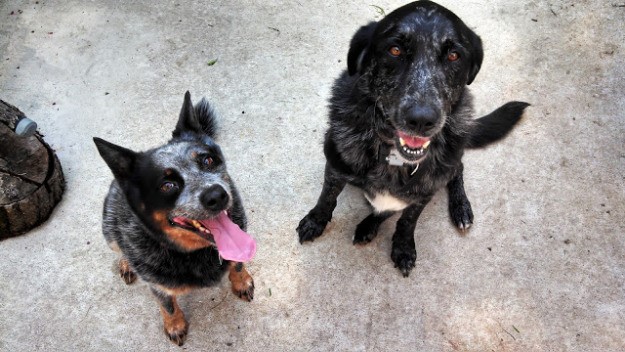You Can Help #EndRabies: Share the Message. Save a Life

By Travis Shealy
SC DHEC Rabies Prevention Program Manager
Share the message. Save a life. World Rabies Day, Sept. 28, is an international event that seeks to raise awareness about rabies in order to enhance prevention and control efforts. Rabies is a deadly virus that kills humans, pets, and wildlife across the globe. Education and regular vaccinations are the key to #EndRabies. This year, SC DHEC is asking South Carolinians to submit photos of their vaccinated pets and livestock to be included in our World Rabies Day 2018 Photo Album. For more information on submission details, please visit our website.
What is Rabies?
Rabies is a virus (Lyssavirus) that can be transmitted when saliva or neural tissue of an infected animal is introduced into the body of a healthy person or animal. It infects cells in the central nervous system, causing disease in the brain and, ultimately, death. Any animal with rabies has the ability to transmit the disease to humans or pets. In South Carolina, rabies is most often found in wildlife such as raccoons, skunks, foxes, and bats. Keep in mind, pets are just as susceptible to the virus as wild animals.
Rabies in S.C.
Since 2013, South Carolina has averaged approximately 110 confirmed cases of rabies in animals a year. The SC Rabies by the Numbers Map provides statistics of rabies cases by county, species, and year. View rabies statistics from across the state here.
Rabies Prevention
Join us in the fight to #EndRabies by keeping your pets up-to-date on their rabies vaccination. This not only protects your pet, it protects you and your family from this deadly virus.
Another great way to safeguard against rabies is to avoid wild animals, particularly wild animals acting tame and tame animals acting wild, and to educate your children on the dangers of handling unknown animals. If you see an animal that appears sick, contact your local animal control office, wildlife control operator, rehabilitation group, or veterinarian for help. Never handle strays or wildlife, and make sure to keep them away from your family pets. You can learn more about rabies symptoms here.
Bats: Rabid bats have been known to transmit the rabies virus to humans and pets. People don’t always realize they’ve been bitten since bat teeth are tiny and bites are easy to overlook. Because of this, you should always assume a person has potentially been bitten when:
- They wake up to find a bat in the room or tent;
- A bat is found where children, pets, or persons with impaired mental capacity (intoxicated or mentally disabled) have been left unattended;
- A person or pet has been in direct contact with a bat.
Any bat that could have had potential contact with people, pets, or livestock should be safely trapped in a sealed container and not touched. Contact your local DHEC Environmental Health Services’ office to report the incident. Never release a bat that has potentially exposed a person or pet. Once a bat is released, it cannot be tested for rabies. Similarly, never handle a bat or any wild or stray animal, alive or dead, with your bare hands.
Reporting Possible Rabies Exposure
If you’re bitten or scratched by a wild, stray, or unvaccinated animal care for the wound properly and contact your health care provider immediately. The health care provider is required by the Rabies Control Act to report the incident to DHEC.
If you or your child is bitten, scratched, or otherwise exposed and you do not seek medical treatment for the wound, you are required by the Rabies Control Act to report the bite to DHEC by the end of the following business day.
Contact information for the Environmental Health Services’ office in your area can be found on our website at www.scdhec.gov/ea-regional-offices.
For more information on rabies, visit www.scdhec.gov/rabies.
World Rabies Day is co-sponsored by the Centers for Disease Control and Prevention and the Global Alliance for Rabies Control (GARC).